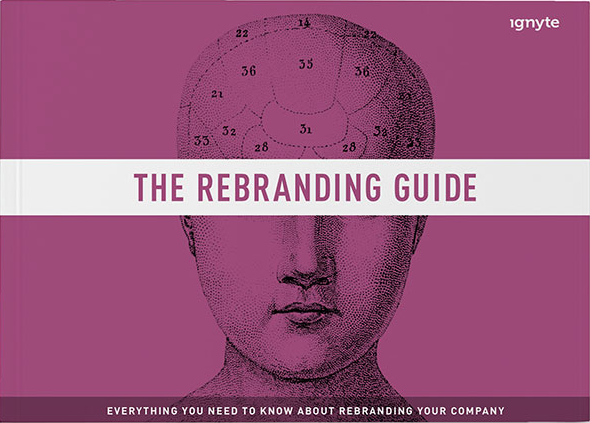The difference between a powerful brand and one that’s indistinguishable from its competitors boils down to two words: competitive differentiation.
Smart businesses use competitive differentiation to tell a compelling brand story that clearly sets themselves apart from the field. Their differentiators convey how they provide unique solutions to their customers’ most important needs.
In a crowded marketplace, customers need compelling reasons to work with your business, after all. Without a strong differentiation strategy, businesses will always struggle to separate themselves from the competition.
CONTENTS
- What is Competitive Differentiation?
- Why Competitive Differentiation Matters
- Types of Competitive Differentiators
- How to Differentiate Your Brand
- Competitive Differentiation Examples
- The Takeaway
Let’s take a closer look at what we mean by competitive differentiation, why it matters, and how to differentiate your own brand.
What is Competitive Differentiation?
Competitive differentiation is the strategic process of defining the unique ways a brand is different than its competitors.
Your competitive differentiation should make a compelling case for why customers should choose your brand over others offering similar solutions.
Differentiating your brand doesn’t mean finding ways to be different just for the sake of being different, but rather intentionally identifying and clearly communicating the unique characteristics of your brand.
Why Competitive Differentiation Matters
Whether your business is B2B or B2C, the marketplace these days is more saturated than ever. From search engine marketing to email marketing to social media, your customers have to wade through a tangled mess of communications to find the solution that meets their needs and expectations.
That’s what makes competitive differentiation such an important part your brand strategy.
Companies willing to put in the necessary effort to establish their competitive differentiators are those that stand out from the crowd—and ultimately capture more market share.
Landing on the right differentiation strategy allows you to:
- Make a compelling argument as to why your brand is best
- Create authentic brand experiences for your customers
- Remain relevant in the face of a constantly changing market
- Blast past your company’s marketing and sales goals
Types of Competitive Differentiators
There are five specific types of competitive differentiators. Understanding the characteristics of each type will help you determine which ones are right for your organization.
Brand Differentiators
Brand differentiation encompasses all the ways customers perceive your brand. Creating unique and meaningful brand experiences infused with recognizable brand personality ensures that customers will remember and favor your brand time and time again.
Product Differentiators
Product Differentiators include all of your products’ unique features and benefits. Think characteristics like design, quality, and performance that give you an advantage in the marketplace. These are the aspects of your products that directly address customer needs.
Service Differentiators
Service differentiators include all the intangibles that create memorable customer experiences. Every touchpoint—from live chats, to support calls and emails, to social media exchanges—is an opportunity to craft an experience that will resonate with customers on a deep and lasting level.
Price Differentiators
How you’ve chosen to price your product or service is the essence of price differentiation. This covers different pricing strategies such as value-based pricing, premium pricing, and market penetration pricing.
Channel Differentiators
Channel differentiation includes every aspect of how your product reaches your customer. The where, how, and when are the keys to channel differentiation. This includes where your brand is sold, how it’s distributed, and whether customers have immediate and easy access to it.
How to Differentiate Your Brand
Now that we’ve established the importance of why you need to stand out in the marketplace and the types of competitive differentiators that will help you do so, it’s time to get to the how.
As with any effective strategic plan, following a proven process will help you unveil distinctive and powerful differentiators. Let’s get into it.
Step 1. Conduct Research
We can’t stress this enough: brand research is a powerful tool. It’s the only way to truly understand how your customers perceive you, how your competitors are positioning themselves, and the steps you need to take moving forward.
Identify Your Target Audiences: Research starts by identifying your target audiences, including existing and prospective customers, strategic partners, and employees.
Conduct Interviews: Once you’ve identified these groups, the next step is one-on-one interviews with a handful of individuals from each segment. Also known as qualitative research, interviews give you deep insights into how each stakeholder group perceives your brand.
Analyze the Competitive Landscape: The final component of research is a competitive brand audit, which enables you to analyze how your competitors are positioning themselves so that you can identify opportunities for competitive differentiation. If you don’t have a good grasp of what separates you from your competitors, neither will your customers.
Step 2. Build A List of Potential Differentiators
With newfound insight from thorough research, you can begin to strategically and effectively formulate your competitive differentiators. The following process will help you develop a list of potential differentiators:
Brainstorming: Build a diverse team of internal stakeholders who understand your brand from the inside and task them with brainstorming the things that set your company apart. Whether you use a whiteboard, post-it notes, or other tool, there are no bad ideas at this point.
Examine Stakeholder Interviews: Process the findings from your research and extract the differentiators that were mentioned during interviews. Create a list that you can compare to your brainstorming list.
Identify Where the Ideas Overlap: Find where the ideas from your brainstorming sessions and stakeholder interviews overlap. This alignment is the mark of true differentiators that are believable to internal and external stakeholders alike.
Step 3: Narrow Down Your List
Time to review your list, which hopefully contains a healthy number of options. The goal is to evaluate each differentiator and narrow down the list—ideally to three key differentiators.
One of the most important aspects of competitive differentiation is focus. Having too few options, say one or two differentiators, increases the likelihood that one of your competitors also provides these things. Claim too many differentiators and they become unmanageable.
We’ve found that three key differentiators is the sweet spot, providing both focus and diversity when it comes to the things that set you apart.
If you happen to have more than three at this stage, it’s okay, because the next step is an additional opportunity to pare down the options even more.
Step 4. Test Your Differentiators
Now that you have your short list of contenders, it’s time to put them through the final test. There are four important questions to ask to see whether your competitive differentiators are effective:
Are They Authentic? Do your differentiators accurately represent your business and its capabilities—or are they more wishful thinking on your part? There are certain areas in branding where it works to be somewhat aspirational. Competitive differentiation is not one of these areas. Your differentiators should be aligned with your brand positioning—and substantively different from your competitors.
Are They Important to Your Audience? This is where the customer research you’ve done comes into play. The data will identify your customers’ needs and challenges and pinpoint what is relevant to them. It’s important to stick to the research findings and not assume how your customers feel. Eliminate any differentiators that won’t resonate with customers.
Are They Specific? One of the best ways to ensure your differentiators are important to customers is to determine whether or not they are specific to the needs and challenges of those customers. Forget meaningless declarations and generic platitudes. Differentiators should outline unmistakable benefits that are highly relevant to the unique needs of your audience.
Are They Believable? Customers see right through empty promises. Attestations that can’t be supported by product or service performance are the fastest way to lose your customers’ trust. Your differentiators should be promises you can deliver on. Even better, they should be backed up by evidence of past performance in the way of case studies and customer testimonials.
Step 5. Incorporate Them Into Your Marketing
Once you’ve selected your competitive differentiators, it’s time incorporate them into your marketing strategy. From your website to your digital marketing campaigns and beyond, your differentiators should guide your messaging and help emphasize why customers should choose your brand over similar companies.
Competitive Differentiation Examples
The best way to understand the power of competitive differentiation is to see some examples for yourself. Below, we take a look at how three of our clients set themselves apart and began to build brand equity with clearly articulated differentiators that speak to the needs of their customers.
Modular Construction Brand
A leader in modular construction, this company’s key differentiators include its sweeping capabilities, unique location, and financial stability:
- Capabilities: Vast factory capacity, customized builds, and the ability to build in both steel and wood.
- Location: Southern California factory for faster turnaround and lower shipping costs.
- Stability: A rock-solid foundation and the ability to bond, so you focus on your project, not your risk.
Digital Engineering & Innovation Brand
With a cutting-edge engineering team, this tech brand differentiates itself around its flexible approach and sought-after specialized skills:
- Specialization: A proven ability to turn advanced technologies into enriching experiences.
- Agility: On-demand skills from an expert team with flexible, real-world capabilities.
- Engineering: Full-scale, creative engineering from an onshore team of core employees.
Homebuilding Brand
A welcoming homebuilder focused on customer service, this brand sets itself apart from the competition with quality, personalization, and hospitality:
- Quality: Superior architecture and materials at a price within your budget.
- Personalization: Styles and design to match your unique needs and tastes.
- Hospitality: An uncompromising level of service that always feels like home.
The Takeaway
Competitive differentiation is a critical component to the success of any business. With consumers besieged by incessant messaging from every conceivable communications channel, powerful differentiators are one of the best ways to break through the clutter, and be seen and heard.
Committing to defining and refining your competitive differentiators is a worthwhile exercise that can produce lasting effects on your business. Without them, you’re just another brand in a sea of same.











